Things to See and Do in Acre
Acre is one of the most fascinating and beautiful cities you could visit in Israel. It is reminiscent of the Old Port of Jaffa and of Jerusalem as the Old City of Acre is also built from magnificent stone. The Old City is “living history”; the ancient houses within the Old City walls are still occupied and alive with activity. Almost all the things to see and do in Acre are located in the Old City on the edge of the Mediterranean. The Old City of Acre is a UNESCO World Heritage Site. On arrival in Acre head straight to the undeground Crusader City.
Nargilas (hookas) at Acre Port. Photo credit: © Dmitry Mishin
As you approach the Old City on your left will be a car park next to a Police Station. At the far end of the car park is the entrance to the Enchanted Garden or Festival Garden an entrance courtyard to the Hospitaller Fortress. The courtyard is surrounded by walls and you enter through an arched doorway in the wall. Inside you are immediately covered by the shade of massive, ancient trees and in the center of the courtyard is a beautiful fountain.
In the garden, you can find the ticket booth where you buy tickets for attractions in Acre, Western Galilee, and Upper Galilee. It is also the site of the Visitors Center and Reservation Center. Purchase your tickets here for several sites which can be explored from here. With your ticket, you get a free audio guide (you have to leave your ID as a deposit). Your ticket includes a 7-minute film introducing you to the sites of Acre which is screened in the Visitors Center. From the Enchanted Garden head into the Hospitaller Fortress.
Inside the Crusader Citadel, Acre. Photo credit: © Dmitry Mishin
Hospitaller Fortress, Acre
The military monastic order of the Knights Hospitaller was dedicated to caring for the sick and specifically pilgrims who had arrived in the Holy Land from Europe to visit Holy sites. The Hospitallers constructed their fortress from the late 12th century to the early 13th century. The Hospitaller Fortress also called the Knights’ Hall was created when the Hospitaller Order was forced to move their headquarters from Jerusalem to Acre during the Second Crusader Kingdom (1291-1191) because of Muslim forces occupying Jerusalem.
They constructed two or three floors around a central courtyard as well as an underground reservoir and sewage system. Visitors enter the cool first floor of the Hospitaller Fortress as the upper levels were destroyed by later Muslim conquerors. The ancient chambers are expansive with dramatic arches above each entrance. In the Hospitaller refectory, you can see massive 3 meter thick pillars supporting the groin-vaulted ceiling.
The central courtyard covers 1200m² and is surrounded by arches supporting what was the upper level. You can see a long ramp leading down into the courtyard. This was for riders to enter on horseback. The Northern Hall is divided into 6 smaller halls and has a 10-meter high barrel vault ceiling supported by arches. The Sugar Bowl Hall is similar. It was constructed over the reservoir which was divided into two interconnecting halls.
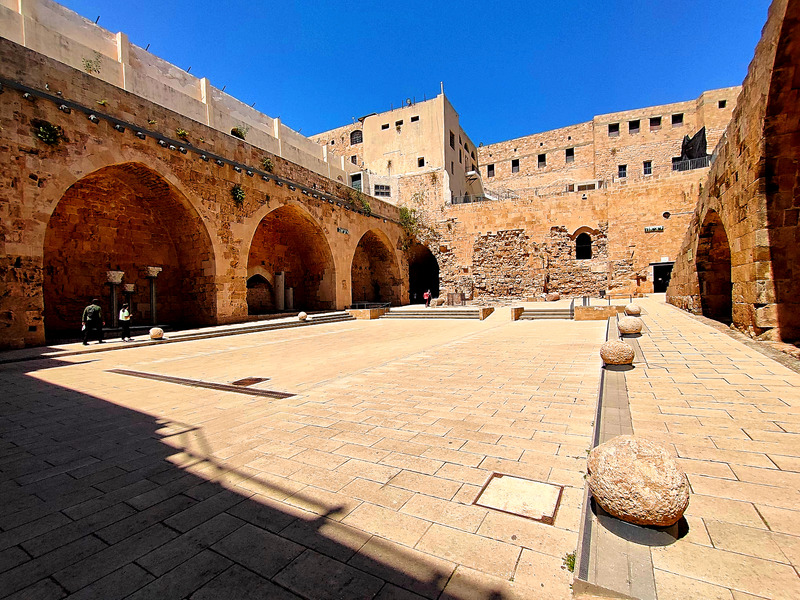
The courtyard of Hospitaller Fortress, Acre. Photo credit: © Dmitry Mishin
Sugar production utensils were found in the storeroom; the Hospitallers were leaders in the sugar industry. The Hall of Pillars covers 1300m² covered by an 8-meter high groin-vaulted ceiling supported by square stone pillars. This was the Hospitaller conference room and storage room. You can also walk along the Southern Street of the Hospitaller Complex and visit the Hall of the Imprisoned.While in the Knights’ Fortress you can visit the Okashi Art Museum where temporary exhibitions are on display within the historic halls. Perhaps the most exciting section of this site is the narrow, low ceilinged escape tunnel that the Hospitallers carved out of the rock from their fortress to the sea.
This is the only section of the complex which is not wheelchair accessible. Once you follow the tunnel to the end you will reach an open area where there is a small souvenir store. Through the store, you reach the Turkish Bazaar. The Hospitallers are not to be confused with the Knights’ Templar who built their acre fortress in another part of the Old City during a different period of history.
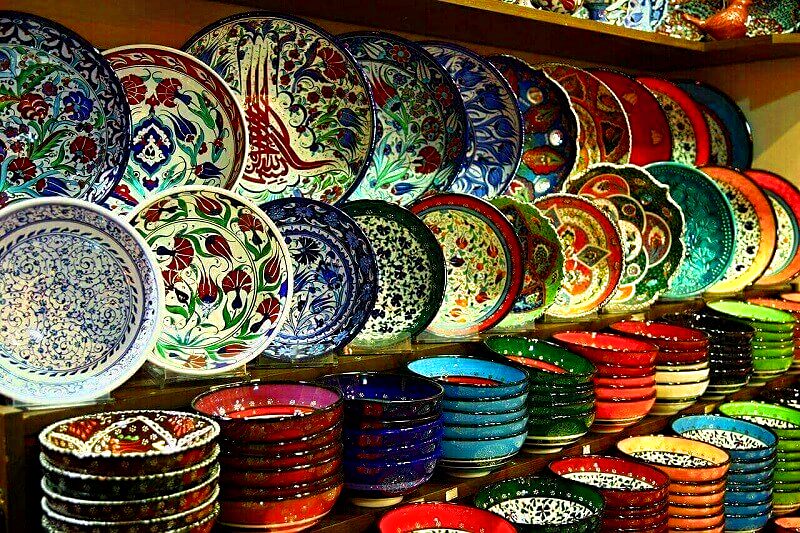
Ceramics for sale at the Acre Old City Market. Photo credit: © Shutterstock
Turkish Bazaar, Acre
Acre Old City Market (also known as the Turkish Bazaar) is today a gentrified quaint narrow stone lane lined with restaurants and specialty stores housed beneath arched entrances which once would have been Turkish stores. You can grab a bite to eat or continue on to your right to the Turkish Baths and Citadel or your left to the main Market Street.Heading back through the Turkish Bazaar you reach the main market street/Via Regis/Kings Way which runs north to south from the entrance of the Old City to the port. This would have been the main throughway during the Crusader period. Here you can enjoy the local color, buy souvenirs, eat delicious local sweetmeats and dine in authentic restaurants.
It is not geared towards tourists but rather the local community coming to buy their vegetables, fish, meat, clothing, and household items. At the southern end of the market street is Chaim Parchi’s home ( former al-Jazzar’s Minister of Finance and the Pasha’s right-hand man during the 18th-19th century), and the Ramchal Synagogue.
Ramchal Synagogue, Acre
This synagogue is named after the Acre Rabbi who lived here from 1743 to 1747. In 1758 the Bedouin ruler Dahar el-Omar took over Acre and confiscated the building which was one of the finest in the city. He constructed the el-Mualek Mosque on top of the synagogue. The Jews were given a replacement building north of the mosque. The new Ramchal synagogue was much smaller and today it has been restored and can be visited by the general public.
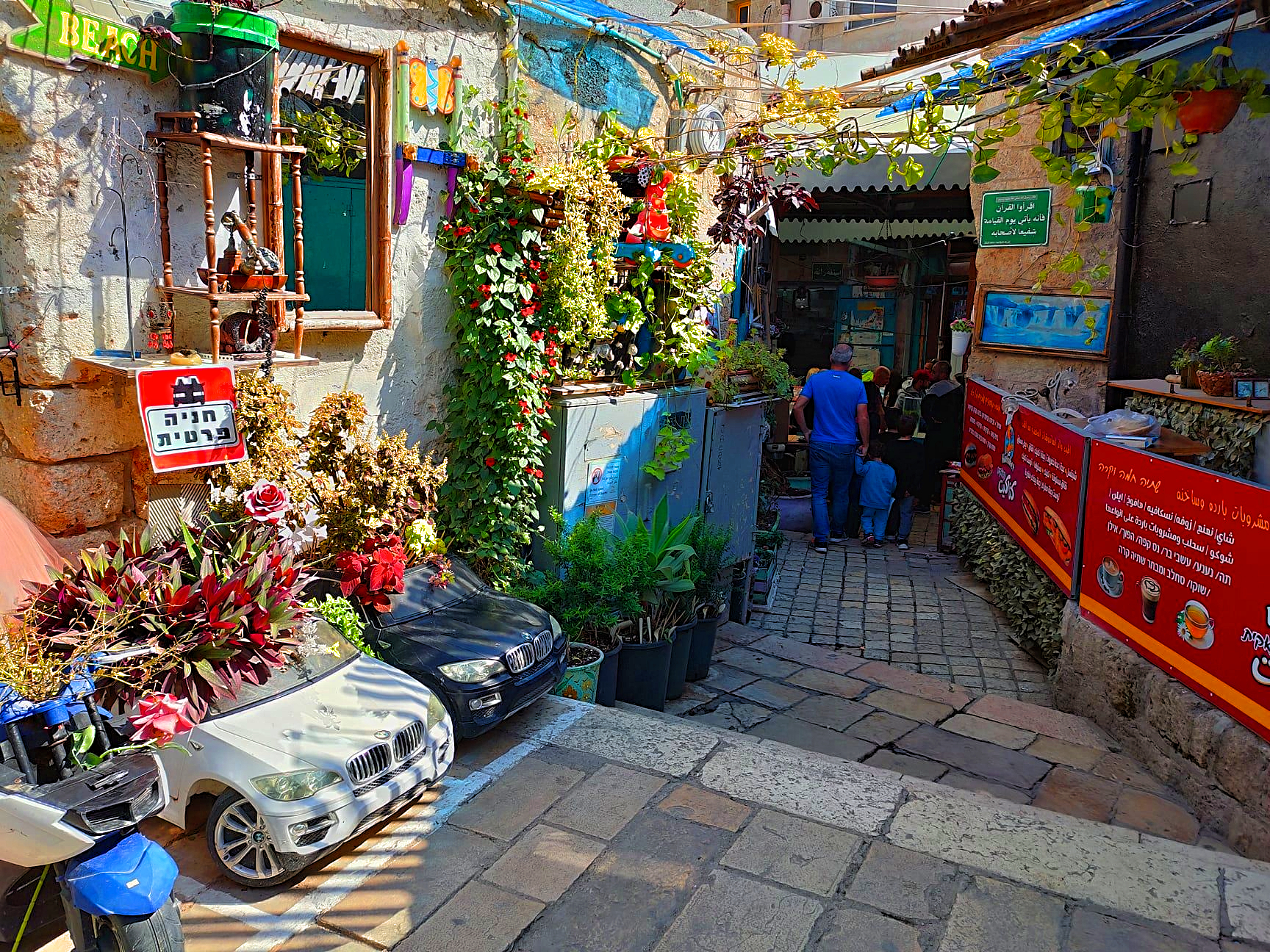
A street in Acre Old City. Photo credit: © Dmitry Mishin
Underground Prisoners Museum, Acre
In the former Citadel, the British set up their prison where they held members of the various Jewish underground resistance organizations. The Jews were fighting for an independent Jewish state and to get rid of British Mandatory rule. Among the prisoners was Zeev Jabotinsky, Commander of the Jewish Defense of Jerusalem.
Other “guests” in the prison were members of the Haganah and Etzel including Moshe Dayan, Moshe Carmel. The museum features statue figures of prisons arranged as they would have been when imprisoned. The prison offers a comprehensive introduction to this period of history and the Jewish resistance groups which fought for the establishment of Israel.
Hammam al-Basha (Turkish Bath), Acre
Visitors enter this restored 18th century Turkish Bath from a small courtyard. Each visitor has an audio guide and enters with a group every half hour for a half-hour visit. The Turkish Bath was an addition to the city during the Ottoman Period. The leading Pasha al-Jazzar made many changes to the city turning it into a powerful stronghold.
Visitors to the Turkish Baths see an informative film in the first room (summer dressing room) where traders visiting Acre would come to relax and wash. Then you move on to the intermediary rooms where traders would get massages and special treatments. Finally, there is the large steam room with a fountain in the middle and a magnificent ceiling with small air holes. Throughout the baths, there are statues of bathers in various activities.

Hammam al-Basha (Turkish Bath), Acre. Photo credit: © Dmitry Mishin
Acre Port
Once you reach the Acre port you can take a boat excursion out to sea or a pleasant ride in a horse-drawn carriage. The port area is lined with restaurants and cafes. The port was first mentioned in 527-525BC when the port was a base for a massive fleet. During the Muslim Period under Sultan Muawiya, the sea walls were fortified and a large shipyard was built here. Soon the Egyptians took the port and undertook further renovations.
In the Crusader period, the port was an essential link to the west. Next, the Ottomans took the city and the port fell into disrepair and was used mainly by fishing boats until being rejuvenated under Daher el-Omar. The port was destroyed when shelled by the British and Austrians in 1840. The Acre Port has long been an entry point for pilgrims arriving in the Holy Land. From the Crusader Period onwards Acre became a major port and this continued into the early 20th century.
Templars Tunnel and the Tunnel Experience
The Templars were a military-monastic Christian order originally based in Jerusalem on Temple Mount (hence the name). When Salah al-Din conquered Jerusalem in 1187 they relocated to Acre. They built a fortress on the edge of the sea protected by two towers. Today the remains of the Templar fortress are beneath the water at the southern end of the Old City.
A 350-meter long tunnel runs from the port where the fortress would have stood inland beneath the Khan a-Shune and almost reaching the Khan al-Umdan ("Caravanserai of the Pillars"). Part of the tunnel is hewn from natural rock and other parts are covered with a semi-barreled dome. Visitors can enjoy animated screenings throughout the tunnel. The screenings reveal interesting stories about life during the Crusader Period.
The Templars' Tunnel, Acre. Photo credit: © Dmitry Mishin
Al-Jazzar Mosque
This is the largest mosque in Israel outside of Jerusalem. It was constructed during the Turkish Period and inaugurated c.1781 in the early period of Al-Jazzar’s rule of Acre. The architecture incorporates Byzantine and Persian styles. It has a beautiful green dome and minaret. The mosque was called the white mosque because of the dome that was once white but now painted green.
The Al-Jazzar mosque holds Sha’r an-Nabi a lock of hair from the beard of the Prophet Muhammad. Before entering the mosque you will see a small circular “kiosk” topped by a green dome constructed for dispensing cool drinks to the worshipers. Next to the mosque are the family tombs of El-Jazzar and his successor Suleiman Pasha. If you are interested in visiting other mosques in Acre there is El-Raml Mosque, El-Mualek Mosque, El-Majadalah Mosque, El-Bahar Mosque and El-Zeituna.
Tomb of Cafarelli, Acre
In 1969 the tomb of Caffarelli was discovered in what is today the Yad Natan Agricultural College. Caffarelli was a colorful character and an engineer in Napoleon’s army. He lost his left leg in a battle in Europe but continued to serve the French army. The popular general was nicknamed “wooden leg” and “dad on crutches” by his soldiers.
Caffarelli was one of the engineers tasked with designing Napoleon’s attack on Acre. He was wounded by a Turkish sniper shot and had to have his arm amputated up to the elbow. Unfortunately, the wound turned gangrene and he died two weeks later. Napoleon visited Cafarelli on his deathbed. The French Embassy in Israel holds an annual memorial ceremony by the tomb.
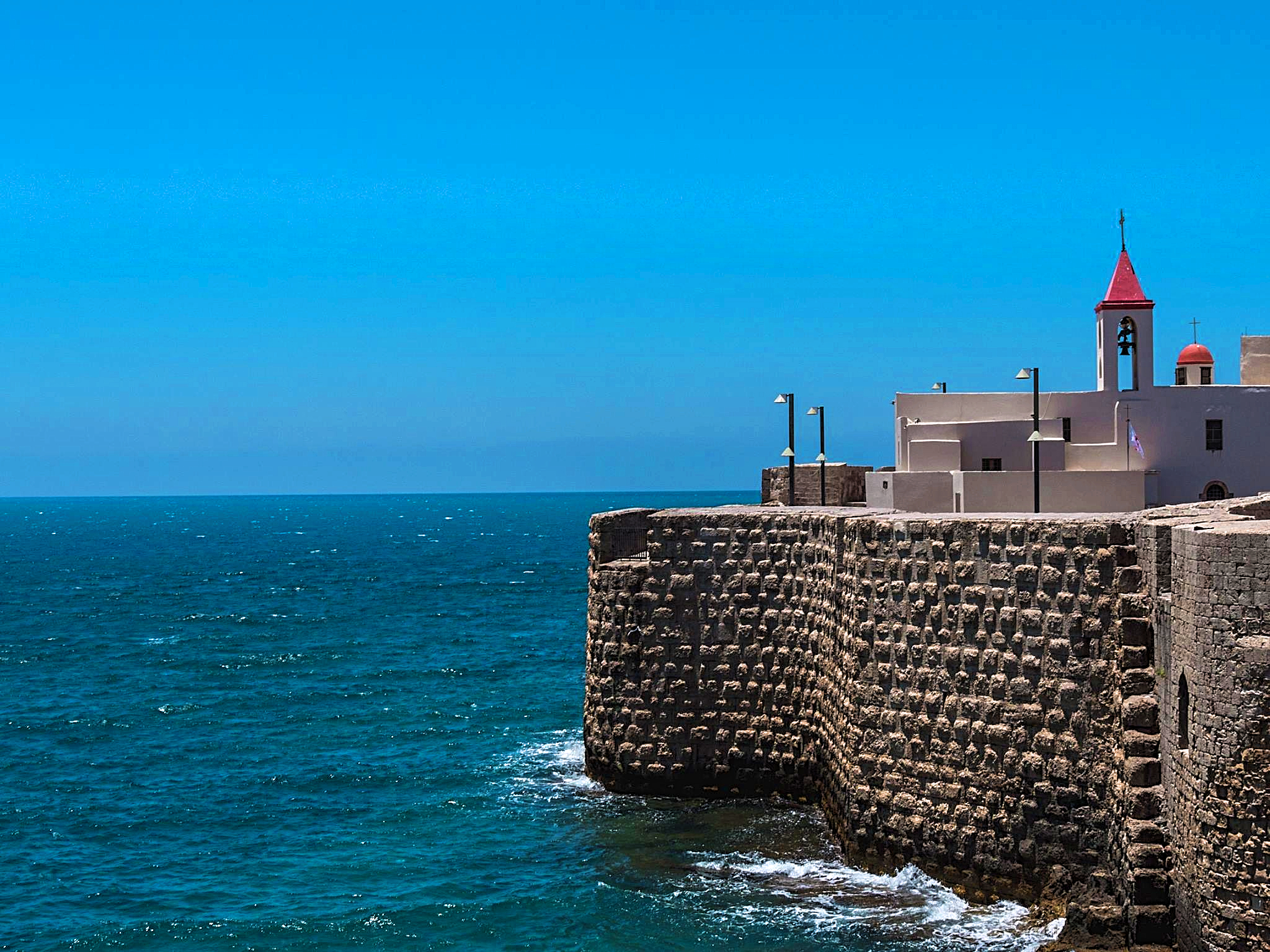
Acre Seafront. Photo credit: © Dmitry Mishin
Acre Churches
There are several charming churches in Acre. San Andreas Church is an early 18th century Greek Orthodox Christian church. The Crusader Period church was built when the community settled in the southwestern part of the city. Next to the San Andreas Church is the Maronite Church.
The Maronites are said to have descended from the Armenians and they were banished from Acre at one point only to return under the rule of Fakhr al-Din II. He allowed the Maronites to renovate their church in 1666. Next to their church is the Notre Dame de Nazareth Monastery.
Terra Sancta Church is a Franciscan church. It is believed that the founder of the Franciscan order, Francis of Assisi visited Acre in 1219. Records from 1673 show that Fakhr al-Din II allowed the Franciscans to settle in Acre and build their church and monastery. The church has a distinct red steeple.
St. John’s Church is adjacent to the lighthouse and is used by the Franciscans. It is thought to have been constructed in the 18th century and today is Acre’s only functioning Latin-Catholic church.
The Greek Orthodox church of St. George is thought to have been the first Christian place of worship in Acre. It was established during the Ottoman Period. The church has a richly decorated traditionally Eastern Orthodox interior.

View of Acre from the ramparts. Photo credit: © Dmitry Mishin
Or Torah Synagogue (Tunisian Synagogue/Jariva)
This Tunisian synagogue was constructed in 1955 and inspired by the El-Ghriba Synagogue in Djerba. The building's interior has rich mosaics and 140 stained glass windows. The mosaics depict scenes from the Bible, Palestinian flora and fauna, the Israeli Army, and more. It is a one-of-a-kind structure because of the interior decoration and has four floors and 7 Torah arks.
Khan al-Umdan (el-Omdan or Pillars Inn and Clock Tower)
This is the country’s best-preserved khan (the Persian name for caravanserais or inn where travelers could rest on the various ancient trade routes). The khan was built under el-Jezzar’s rule in 1784 and was one of four such khan’s in Acre. The khan has multiple columns which earned it the name Caravanserai of Pillars or Inn of Columns.
The granite columns were brought to Acre from Caesarea and Atlit. Later this was where Bah’aullah of the Baha’i faith would receive guests. A clock tower was added in 1906 in honor of Ottoman Sultan Abd al-Hamid’s silver jubilee. The Jaffa Clock tower was built for the same purpose. The khan is open 24/7 to visitors and is a major performance venue during festivals.
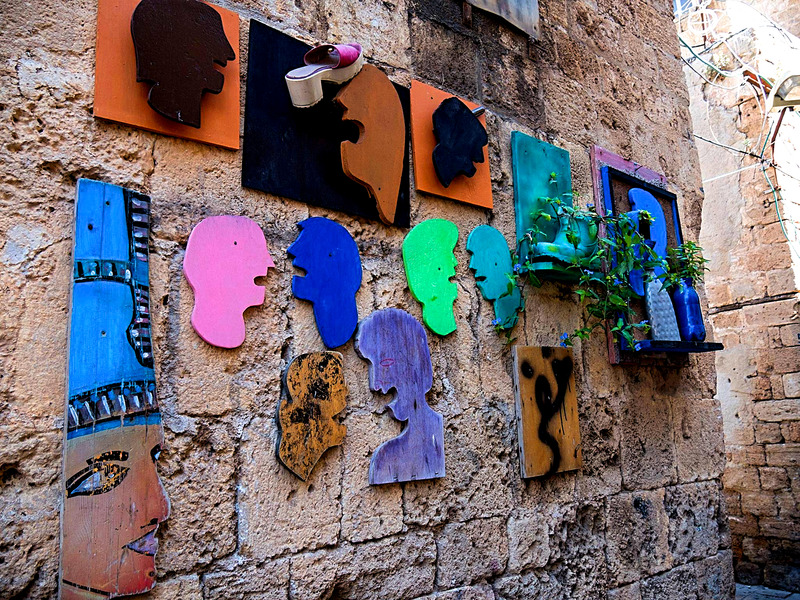
Wooden masks on the wall in Acre Old City. Photo credit: © Dmitry Mishin
Shrine of Baha’u’llah and Bahai Gardens
Most visitors to Israel know about the Baha'i Gardens in Haifa but in Acre, you can see where the Baha’i prophet Baha’u’llah lived for 12 years and was buried. The major sites here are the Manor and the Shrine of the Prophet. The shrine is the holiest site in the Baha’i faith and when believers pray they face this site.
Baha’u’llah was born in 1817 in Iran and despite his superior position in the Sheikh’s court he chose to devote himself to the poor. The mansion covers 740m²; the ground floor was built in 1821 and the upper floor was added by a prosperous merchant in 1870. The merchant fled from Acre during a plague in 1879 and the property was acquired by Baha’u’llah. Similar to the Haifa gardens the Acre Baha’i gardens are exceptional.
Treasure in the Walls
This Ethnographic Museum displays artifacts in the northeastern walls of the Old City of Acre. The walls were originally constructed during the Ottoman Era under el-Jazzar following the failed siege by Napoleon in 1779. The Commander’s Tower now holds an exhibition of life in Galilee during the 19th-20th century. The artifacts on display include furniture, locks, clocks, and household items. One wing of the tower has been turned into a recreation of historic artisan workshops and market stalls including a blacksmith, hat maker, pharmacy, and carpentry.
Visit Acre with a group day tour or book an individual excursion in Acre with a private guide.

Cannons in Old Acre walls. Photo credit: © Dmitry Mishin
 Login / Register
Login / Register
 Contact Us
Contact Us
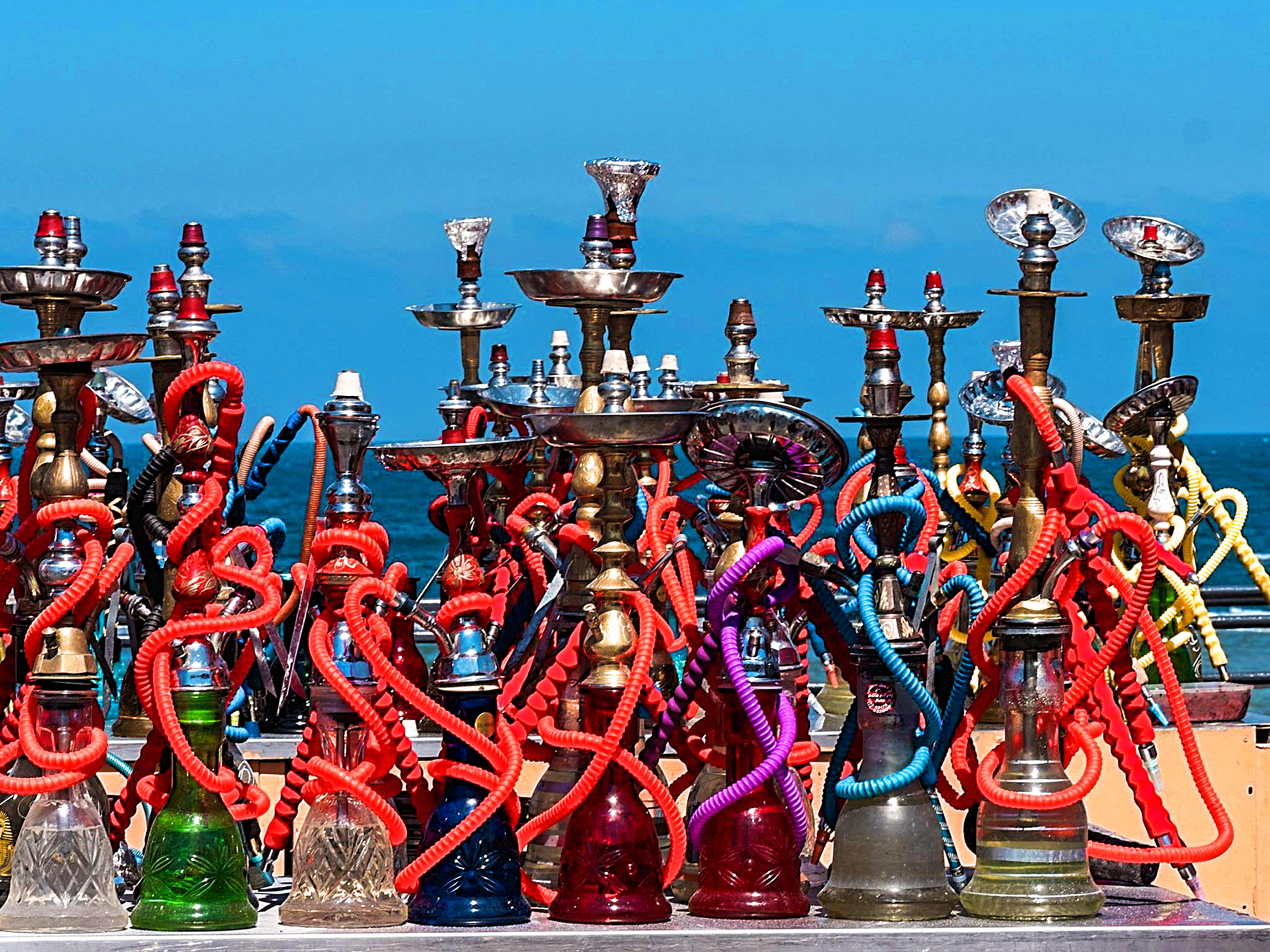
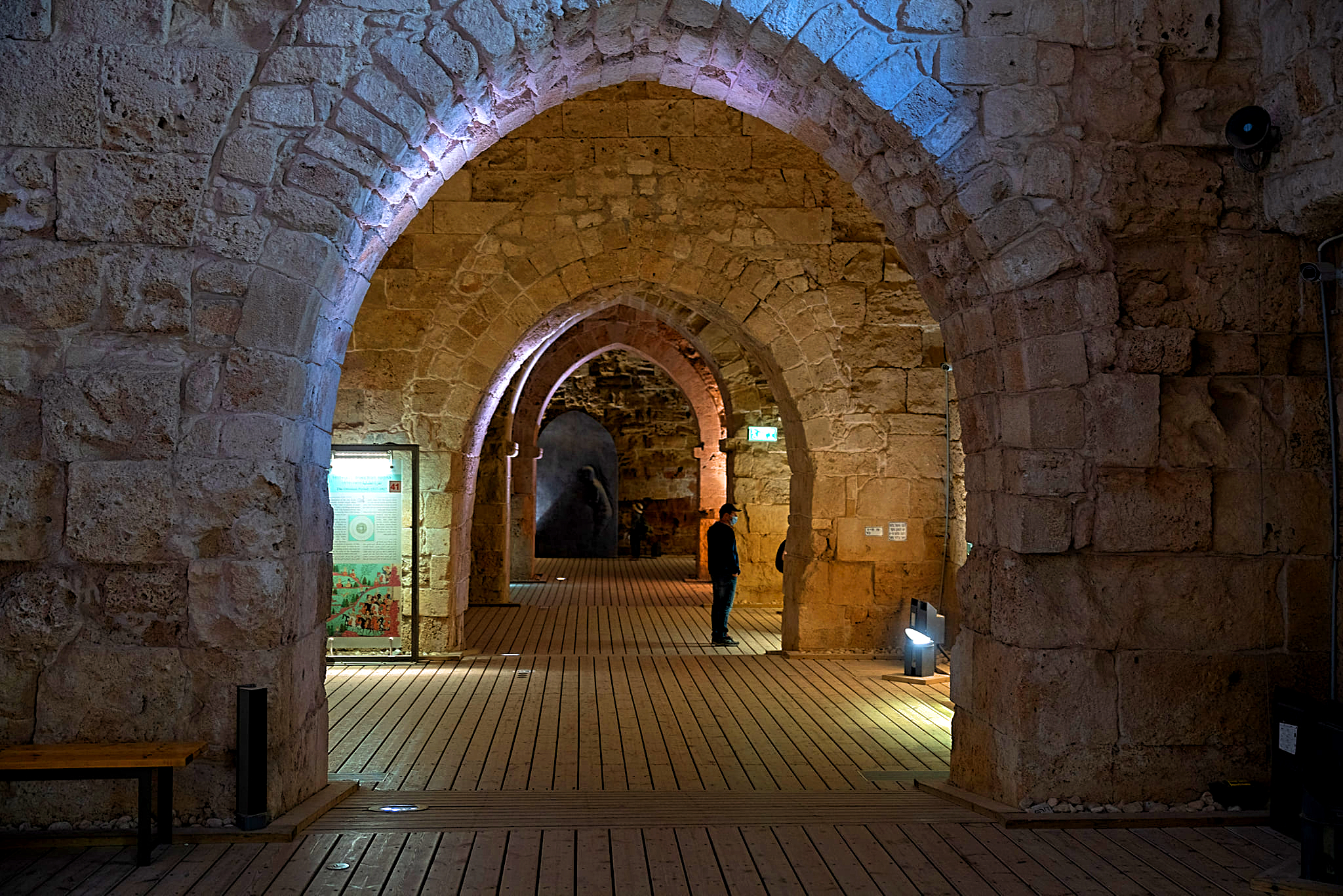
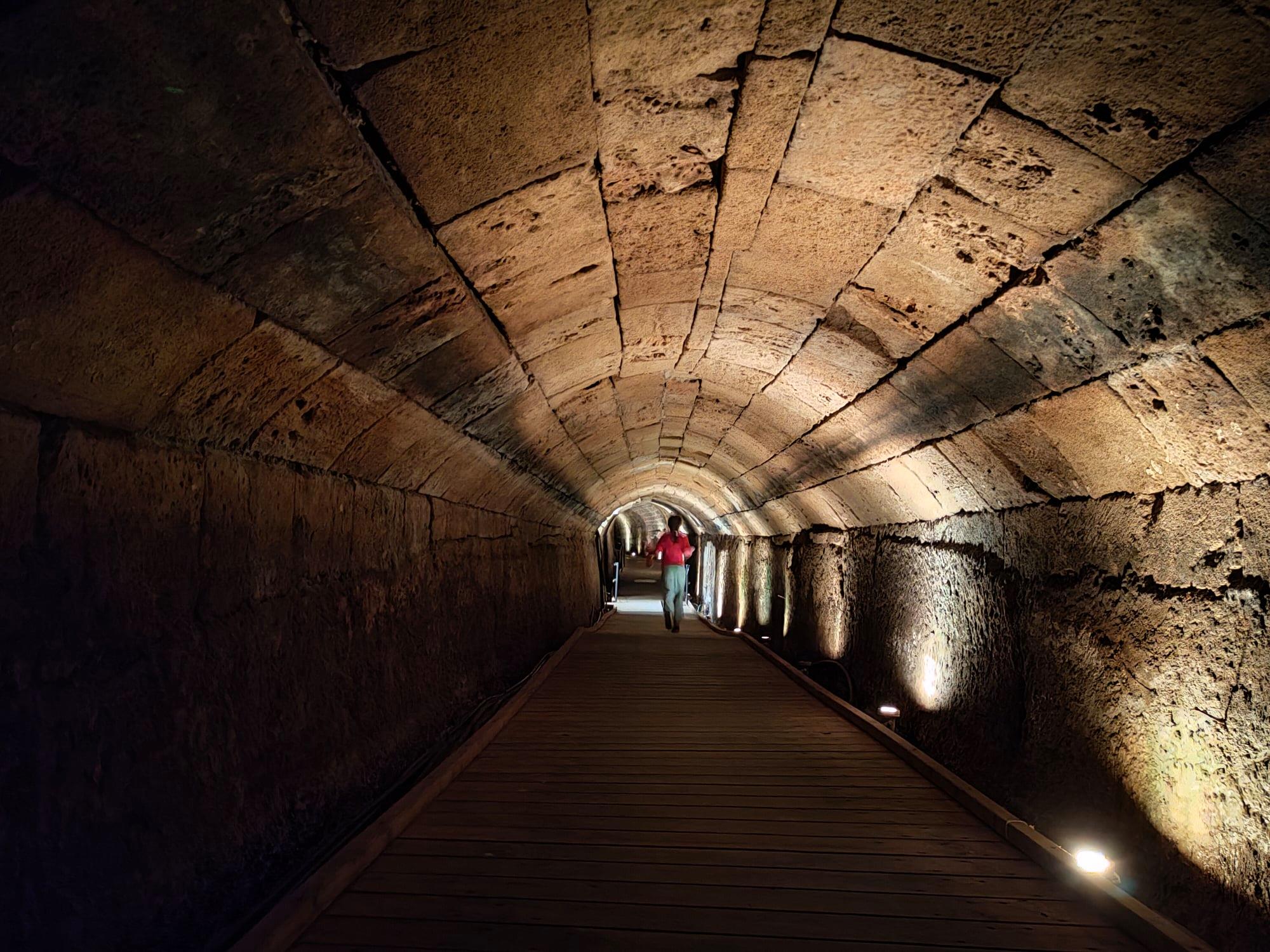
 Certificate of Excellence
Certificate of Excellence Guaranteed Departure
Guaranteed Departure Low Prices Guaranteed
Low Prices Guaranteed 24/7 Support
24/7 Support




